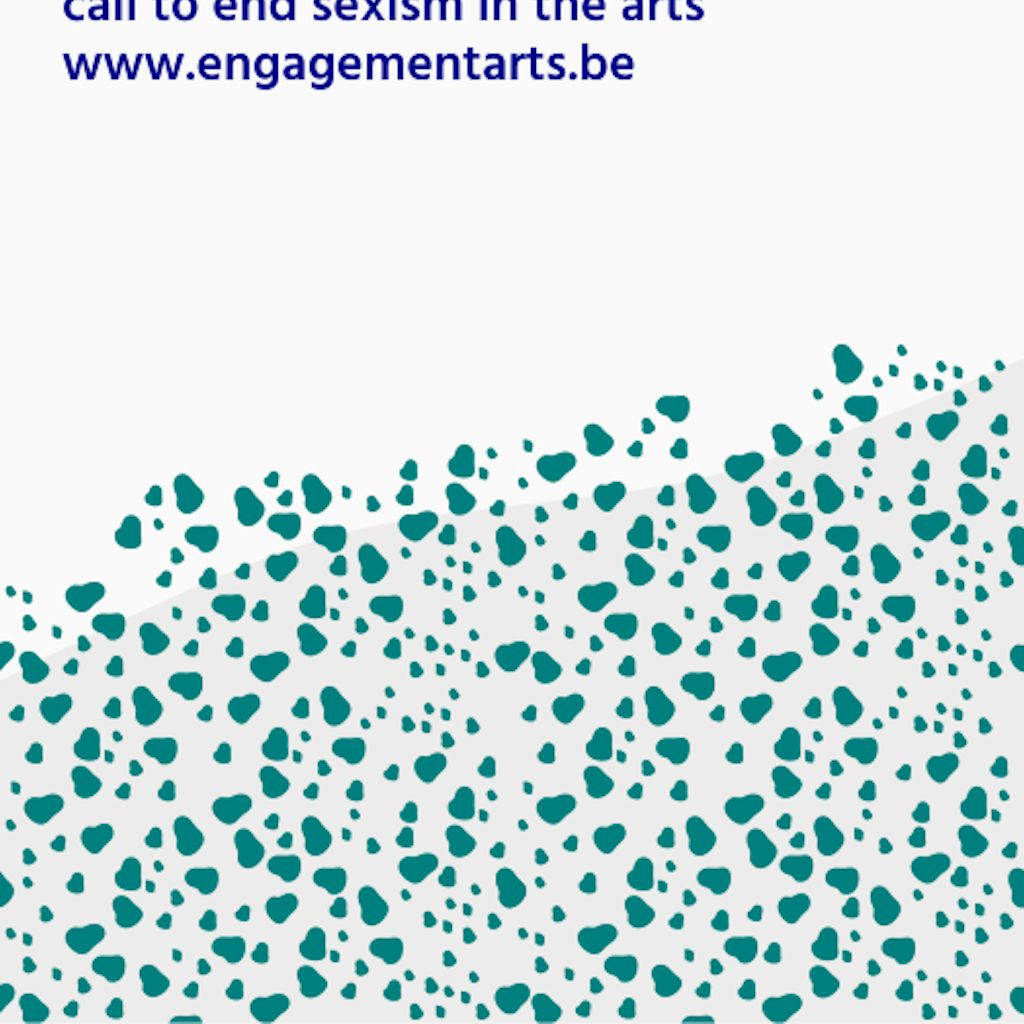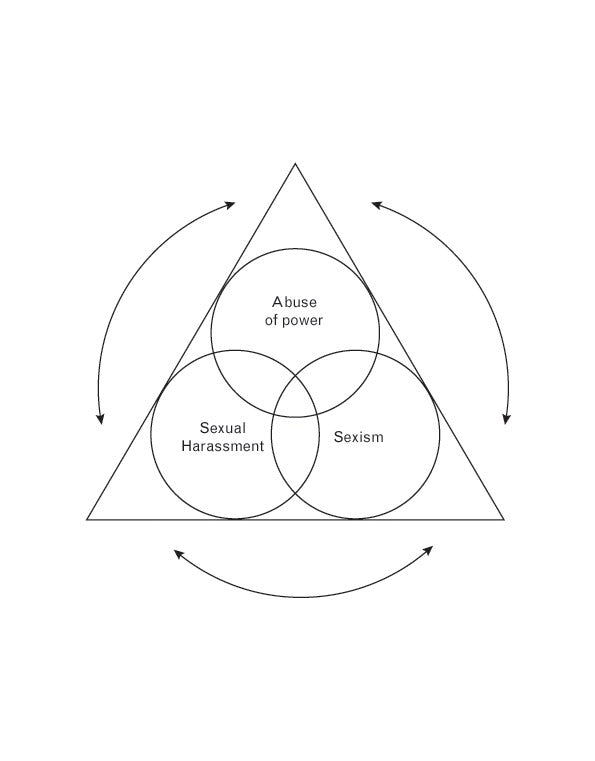
Sexism, sexual harassment and abuse of power in the arts. A suggestion towards understanding terminology

After the ENGAGEMENT-statement was published, confusion was expressed regarding the use of certain words and the sudden appearance of terminology interwoven in this dense piece of writing. It is true that ENGAGEMENT was published in the wake of #metoo and departed from an urgency to address the widespread issue of sexual harassment in the field of arts and elsewhere. ENGAGEMENT, however, wanted to define itself in a broader context, more precisely as “an artist-led movement tackling sexual harassment, sexism and power abuse in the Belgian arts field.” These three terms, it was concluded, seemed to function as keys for unlocking the hidden forces behind the gender inequality that is present in the arts.
Dit artikel is enkel beschikbaar in het Engels.
“Manifestos are often disagreeable because they show the violence necessary to sustain an agreement”
Sarah Ahmed
Notes on a statement
1) Sexism is prejudice or discrimination based on a person’s sex or gender identity. Sexism can affect anyone, but it is particularly documented as affecting women and girls. It has been linked to stereotyping and may include the belief that one sex or gender is intrinsically superior to another. Sexism appears in different forms and degrees. It ranges from small verbal comments to global issues of wage inequality.
2) Sexual harassment is described as a range of actions involving the harassment of a person due to their sex or gender identity. Actions may include unwelcome sexual advances, requests for sexual favors, verbal or physical harassment of a sexual nature, and the creation of a hostile environment. Sexual harassment often involves bullying or coercion, and the harassers often have a certain degree of social or economic power over the victim.
3) Abuse of power is a form of systematic wrongdoing in a professional context, which affects the performance of professional duties negatively. Abuse of power can also mean a person using the power they have for their own personal gain.
On paper, the definitions of these notions are easily discernible. In practice, however, it is often difficult to tell these notions apart from one another as so often one leads to another. In that sense, they exist in relation to each other. The visual aid you can see below is created to help you make the above-named distinctions when analysing examples from your own or some else’s life.

Abuse of power is a type of oppression strongly defined by hierarchical relationships, and it is often linked to precarious working conditions, such as a non-standard employment characterized by low payment, insecurity, exploitation and lack of legal protection. These conditions might help to establish a culture of silence. When people are afraid to lose their job, they remain silent and so enable the abuse of power to be normalized and continued. These dynamics and environments are often described as ‘toxic’ and are held up via bystanders whose complicit behaviors both enable and protect the abuser’s behavior. While people who abuse their power might use sexual harassment or sexism to control certain individuals, they might also apply other methods of reinforcing their positions of power, and do so repeatedly, which is referred to as ‘patterns of abuse’. Examples include making people dependent on them, setting up situations where people feel forced into loyalty, using manipulation or intimidation to control, creating an environment where any objection, as in saying ‘no’, is made impossible and so on. It is important to notice that abuse of power is not always necessarily linked to sexual harassment or sexism. It can also be linked to any other type of discrimination or attempt of crossing boundaries without the victim’s consent.
This brings us to the crucial intersectional approach of different systems of oppression and abuse. In this view people “experience oppression in varying configurations and in varying degrees of intensity. Cultural patterns of oppression are not only interrelated, but are bound together and influenced by the intersectional systems of society. Examples of this include race, gender, sexuality, class, ability, and ethnicity.” ( Kimberlé Crenshaw, 1989)
Discrimination and harassment form a solid base for the abuse of power. Even if not always directly utilized, these are always present in the hierarchical constellation of power.

Like any other form of discrimination, sexism is omnipresent in our culture. It is structurally practiced and manifests itself through subtle and less subtle ways of exclusion and oppression, which affirm the existence of an underlying misogynistic culture. Sexism is deeply intertwined with our lives and could be seen as a web of presumptions or a set of strong beliefs to which we pay little to no attention. This lack of awareness makes it possible for many people, both victims and perpetrators, to understand and experience sexism as ‘normal’, i.e. “nothing out of the ordinary”.
Sexual harassment, on the other hand, comes down to the crossing or the pushing of someone’s physical or psychological boundaries in a sexualised manner without or against their consent. The notion of consent, which is the mutual permission or agreement for something to happen, is especially complex when seen in the context of abuse of power. A person may outwardly appear to consent or agree to the act of abuse and may even be, or appear to be, maintaining a relationship with the abuser.
The act of harassment often coincides with destructive behavior such as coercion, bullying, violence, humiliation or intimidation justified by a positive inclination on the side of the perpetrator.
If sexism is rooted in a set of negative or denigrating ideas concerning a person’s sex or gender identity, then sexual harassment can be seen as its logical counterpart. In other words, it could be said that if sexism affords harmful attitudes towards a gendered group to happen, sexual harassment supports or even affirms the solid cultural position of sexism.
By focusing on one specific professional field, as in the field of the arts, it is easier to recognize similar scenarios and see how an experience of discrimination supports harassment and abuse of power, even if one doesn’t experiences all of these acts directly.
Listening to people’s personal experiences of sexism (or thinking of something you have experienced yourself), you will notice how these notions overlap and coexist. However, the visual aid that was suggested does not aim to measure harm by making hierarchical distinctions between different experiences or placing them on a scale. This is why the diagram suggests a rotating triangle, so that we can think of these entwining relations as something that can alter depending on the situation and someone’s personal experience.





